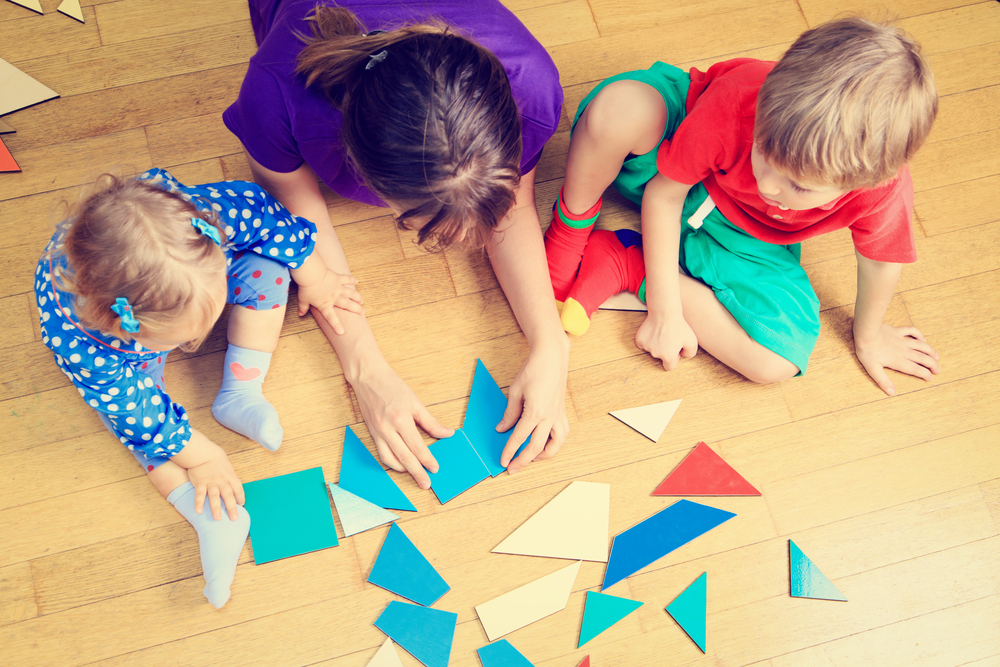Last weekend on the train from the city, I watched an interaction between a young mum and her preschooler that really made me smile.
Little Miss Three Year Old had grabbed a hold of her mother’s purse and emptied the clinking, shiny objects into mum’s lap. Rather than discouraging her from rummaging through her purse, her mother immediately turned her daughter’s curiosity into an imaginative game. Having allocated the roles of customer and cashier to herself and her daughter, she then asked the child which combinations of coins could be used to make up a dollar. What followed was about 10 minutes of happy chatting back and forth over different combinations – which were ‘too much’, which were ‘not enough’ and which were ‘just right’.
In short, this young mum had taken her child’s natural curiosity and spontaneously created a powerful learning opportunity. Her daughter provided the imaginative instinct and she provided some structure, simple mathematical language and a willingness to ‘play’ with her child.
The power of playful interactions between adults and children around math concepts in early childhood is often underestimated. As parents, we readily engage with our children in reading and literacy. Less often do we intentionally interact with young kids in mathematical activities.
Yet, a substantial body of research has demonstrated the value of children’s imaginative play for promoting cognitive development as well as social cooperation and interpersonal understanding (Nicolopoulou 2010, p.2). When it comes to the development of early numeracy, this is most effective when children have adults who are willing and able to provide challenges, structured scenarios and appropriate mathematical language. Combining free play with ‘intentional teaching’ (for example, explaining to a child that shapes with three straight sides are called ‘triangles’), and promoting play with mathematical objects and ideas, provide powerful boosts to children’s early numeracy skills (Clements and Sarama, 2014).
As adults we also often tend to underestimate the complexity of children’s games. However, playing games – whether structured (such as board or card games with rules) or unstructured (such as imaginative scenarios and role playing) – can require lots of critical thinking and problem solving (Reiber 1996, p.52).
There is research to suggest that children who regularly engage in mathematical play in early childhood (such as construction with blocks and shape puzzles) may also reap longer term benefits (Wolfgang, Stannard & Jones 2001, p.178). However, these effects are more evident in children who have had parents or teachers ‘scaffold’ their learning through intentional teaching and by introducing appropriate mathematical language and concepts (Fisher et al 2013, p.1877).
A recent article by Daniel Donahoo (ABC News, Australia) provides some practical tips for ‘nailing play’ with your child, each of which are directly applicable to kick-starting their early numerical development.
Spending time each day in simple mathematical play will introduce your child to a range of valuable number, shape and logical skills and concepts. However, it will also have the powerful advantage of fostering a ‘mathematical mindset’ in your child, in which she understands mathematics to be fun, engaging – and playful.
~ Marcus Garrett
References:
Clements, D.H. and Sarama, N. (2014), ‘Play, Mathematics, and False Dichotomies’. Blog post on Preschool Matters Today, A blog of the National Institute for Early Education Research. Accessed 12/12/2017. URL: https://nieer.wordpress.com/2014/03/03/play-mathematics-and-false-dichotomies/. NIEER, Rutgers University : New Jersey, US.
Donahoo, David (2017), ‘Five Ways to Nail Playing With Your Child’. Article, ABC News, Sunday 10/12/2017. URL: http://www.abc.net.au/news/2017-12-10/5-ways-to-play-with-your-child/9240134. Accessed 11/12/2017.
Fisher, K.R., Hirsh-Pasek, K., Newcombe, N., Golinkoff, R.M. (2013), ‘Taking Shape: Supporting Preschoolers’ Acquisition of Geometric Knowledge Through Guided Play’, in Child Development, November/December 2013, Volume 84, Number 6, Pages 1872–1878. p.1877. DOI: 10.1111/cdev.12091. Society for Research in Child Development : Washington, US.
Nicolopoulou, A. (2010), ‘The Alarming Disappearance of Play from Early Childhood Education’, in Human Development, 2010:53, pp.1-4. DOI: 10.1159/000268135. Karger : Basel, Switzerland.
Reiber, L. (1996), ‘Seriously Considering Play: Designing Interactive Learning Environments Based on the Blending of Microworlds, Simulations, and Games’. In Educational Technology Research & Development, No. 2, 1996, pp, 43~58. DOI: 128.250.144.144 on Tue, 12 Dec 2017 23:13:46 UTC.
Wolfgang, Charles & L. Stannard, Laura & Jones, Ithel. (2001). ‘Block Play Performance Among Preschoolers As a Predictor of Later School Achievement in Mathematics’. Journal of Research in Childhood Education. 15. 173-180. 10.1080/02568540109594958.



